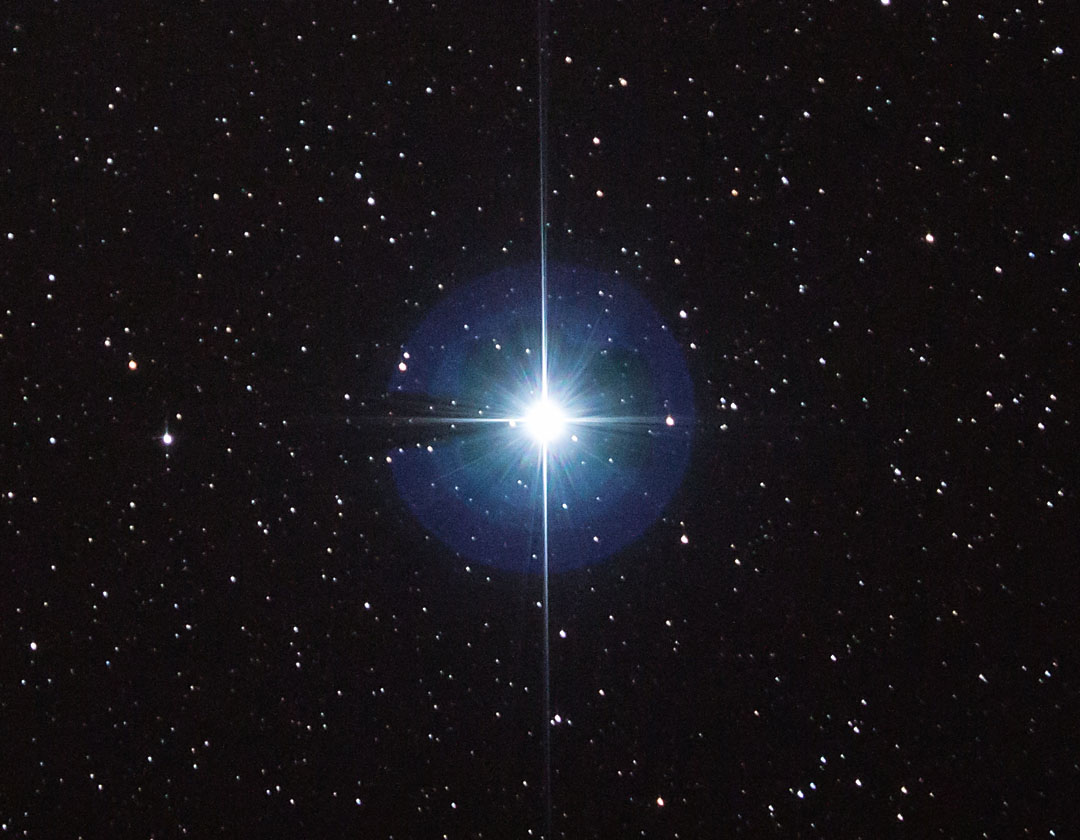Vega (alpha Lyrae, α Lyrae, Alpha Lyr, α Lyr) is the brightest star in the constellation of Lyra, the fifth brightest star in the night sky and the second brightest star in the northern celestial hemisphere, after Arcturus. It is a relatively close star at only 25 light-years from Earth, and has been studied by astronomers since the days of Galileo. Vega has been observed by space telescopes such as Hubble and Spitzer, and it was one of the first stars to have its picture taken by the Chandra X-ray Observatory.
Vega is a blue-white main sequence star of spectral type A0Va. It is about 2.1 times as massive as our Sun and about 9 times as luminous. Its surface temperature is around 9600 K, giving it an exceptionally brilliant white hue that makes it stand out in our sky even when it isn’t particularly close to us. At this temperature Vega also emits a significant amount of ultraviolet radiation which ionizes any gas around it into a bright nebula known as “Veil Nebula”. This same UV radiation also causes Vega’s dust disk to glow brightly in infrared wavelengths creating a “halo” or “disk” around the star that can be seen in long exposure photographs.
Vega was one of the first stars whose distance was estimated using parallax measurements. In 1838 Friedrich Bessel used observations of stellar positions over six months to calculate that Vega was 10.4 light years away from Earth—the first reasonably accurate estimate for any star other than our Sun (Bessel had earlier used Sirius as his baseline but found its large proper motion made it an unsuitable choice).
In 1925 Edwin Hubble used spectroscopic measurements to show that Vega was rapidly moving towards us with a radial velocity of +79 km/s—one of the highest positive radial velocities ever measured for any star at that time (nowadays we know that many young stars have much higher radial velocities). Based on this measurement he calculated that Vega must lie only 17 light years away making it one of our nearest stellar neighbours (since then more accurate parallax measurements have revised this value slightly upwards to about 25 light years).
Hubble’s measurement also revealed another interesting property of Vega: unlike most stars which are members of binary or multiple systems where two or more stars orbit each other under their mutual gravitational attraction, Vega appears to be single with no companion stars visible within several arcseconds even when viewed with powerful telescopes operating at near-infrared wavelengths where such faint companions would otherwise be easily detectable if they existed.


